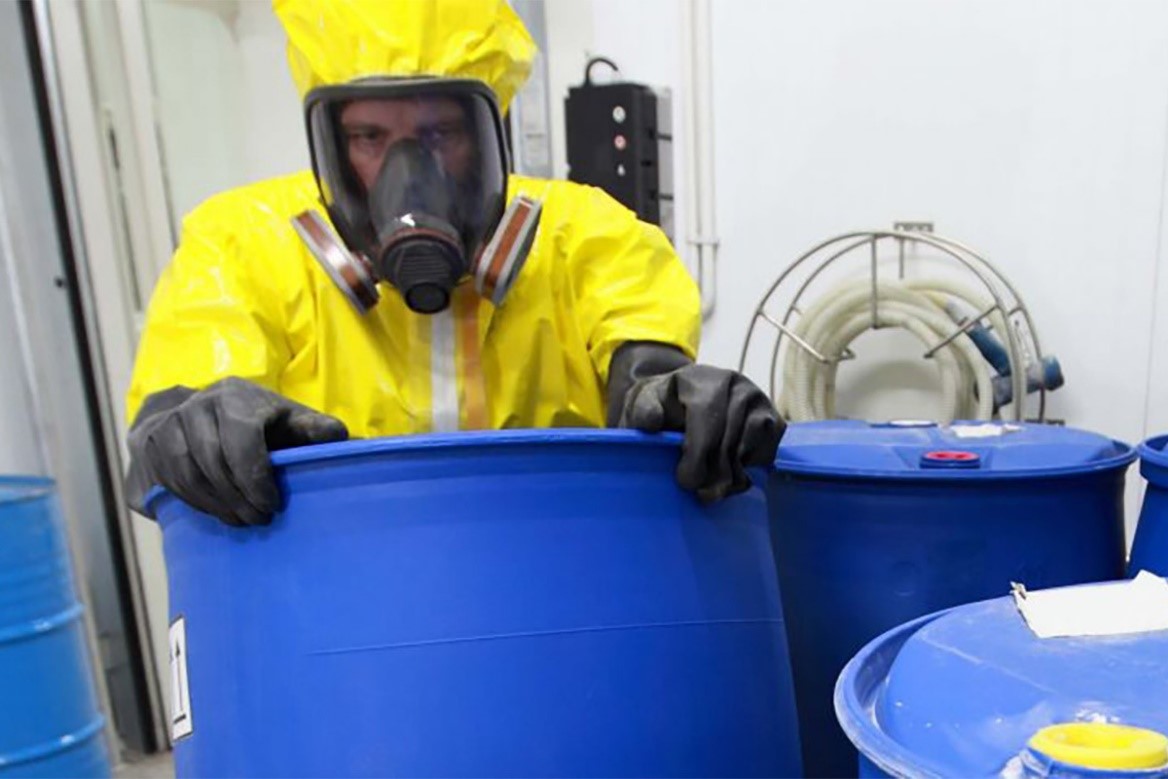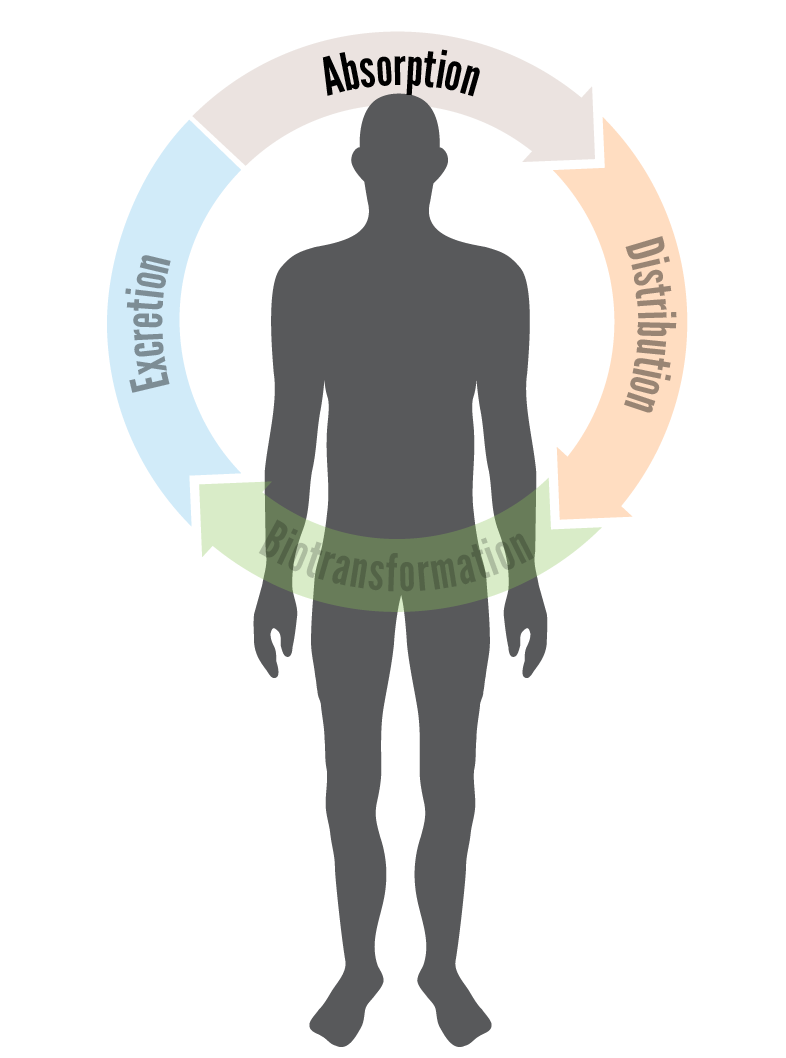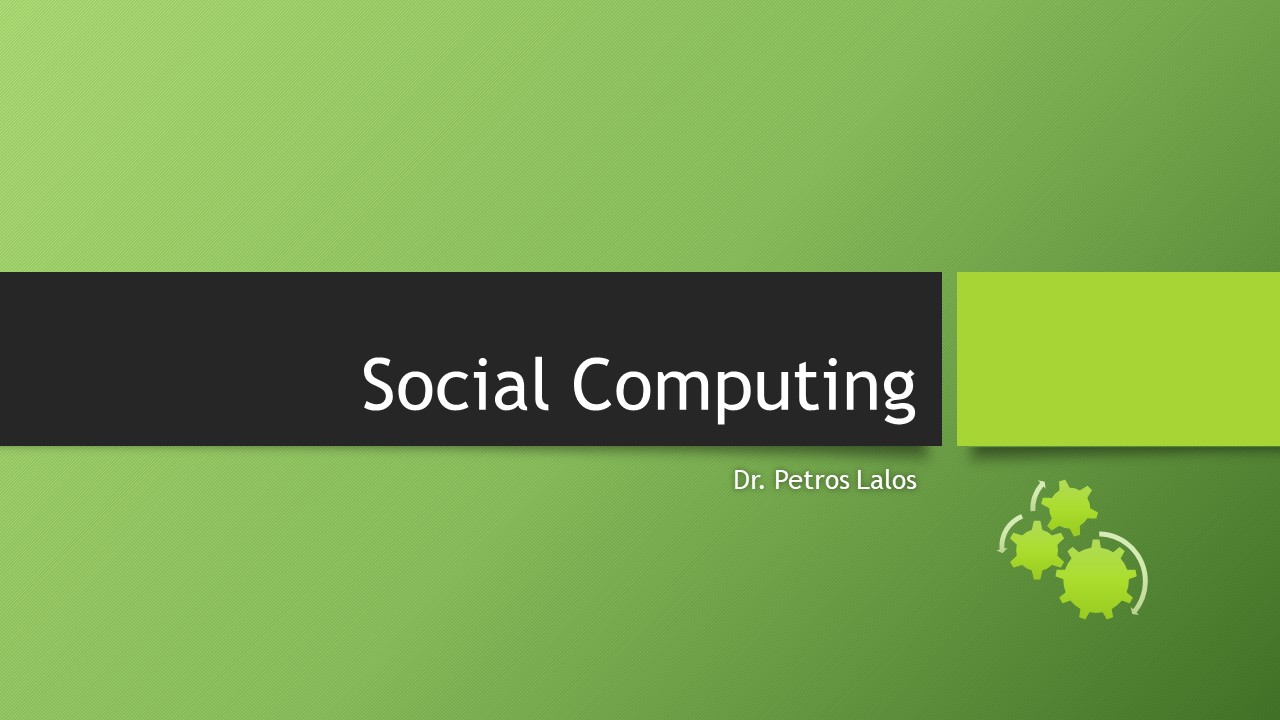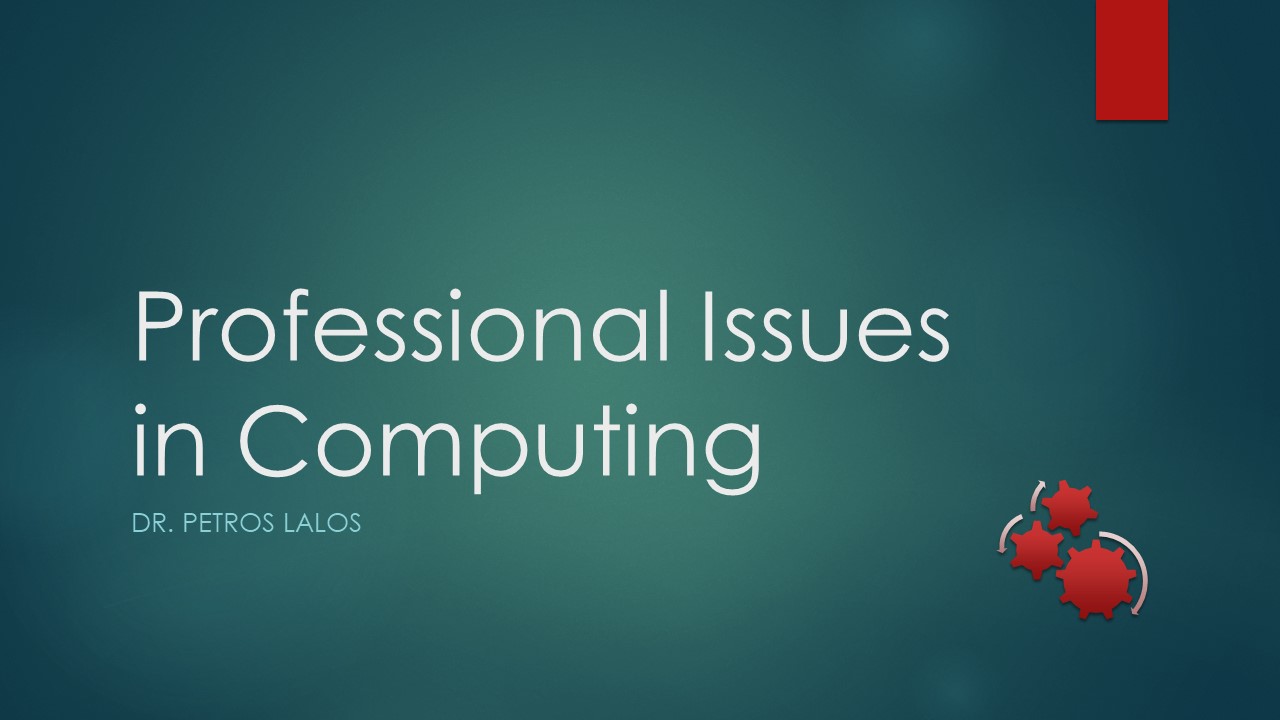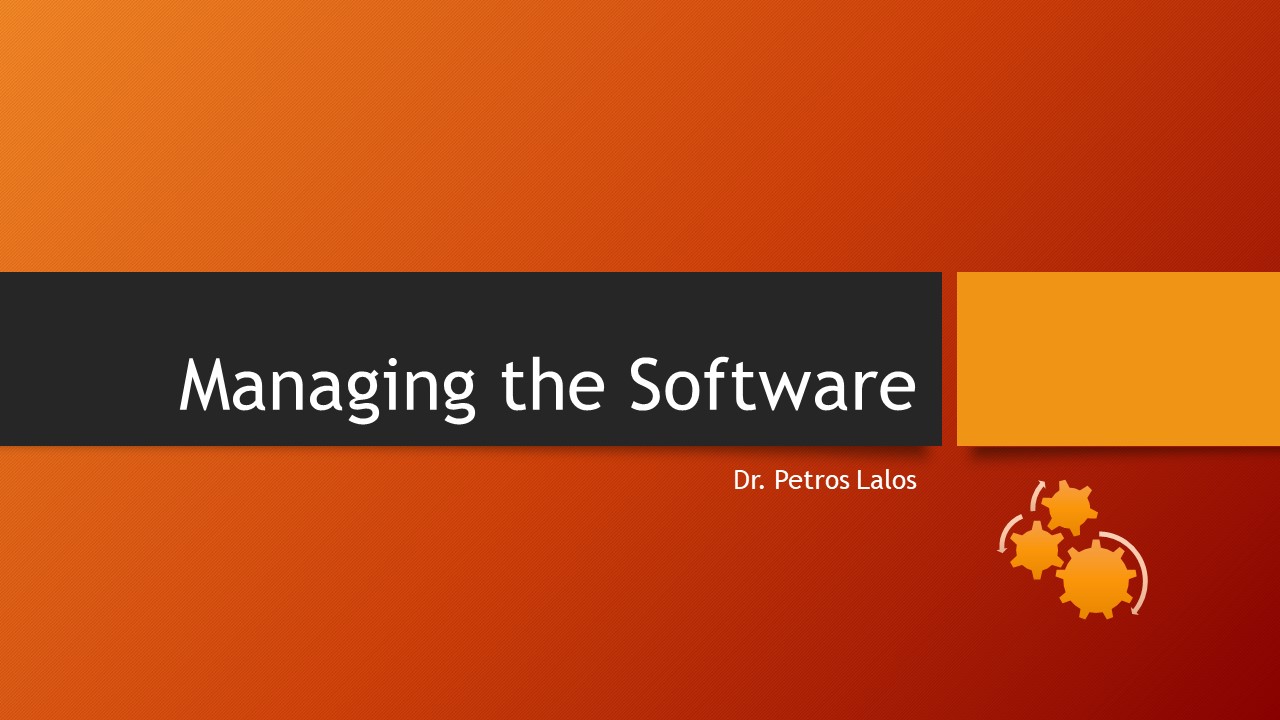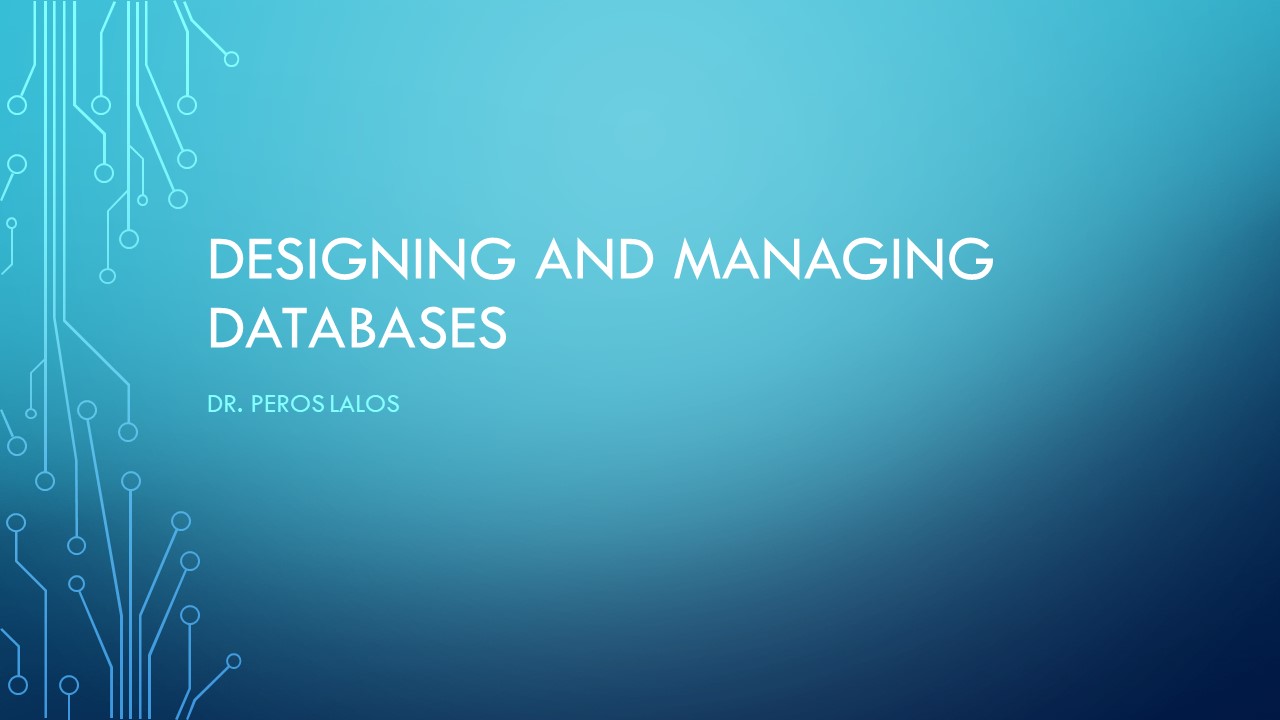Διαθέσιμα μαθήματα
Upcoming-
One would naively claim that Budgeting and moreover
Cost Control are entirely financial tasks. Reality and present business
environment have proved that this is an absolutely false statement. Management at all levels should realize the
importance of proper budgeting and cost control. The whole process involves linking your
budgets to your strategic plan in your organization in order to ensure
maximization of shareholder wealth. Since risk is incorporated in every
business aspect, some basic elements of risk management are also addressed. Business
decision makers are in demand not only of tools and techniques for a
comprehensive understanding of budgets and cost control, but for the related
analysis which could lead to better decisions being made.
Various types of budgets will be displayed along with the latest approaches to budgeting. Particular focus will be given to flexible budgeting and variance analysis, as well as to the identification of the biggest scarce resource. This will give the opportunity to improve or even effectively optimize the use of this resource.
Presented in the forms of examples, the main course topics are :
- Basic Budget Principles
- Linking Budgets to Strategic Plans
- Various Budget types
- Budgeting Methods
- Costing techniques
- Variance Analysis
Upcoming-
Complex negotiations nowadays, involve a methodological approach, comprising of sophisticated techniques and expert knowledge. Aiming to achieve a win for all parties involved, you have to know upfront how to confront these challenging negotiations with the best chance of success. Well preparation for all possible scenarios is of utmost importance, as well as the acquaintance of different tactics is, used by difficult negotiators.
This course is developed under the scope of providing to the participants expert knowledge on negotiation skills, let alone various tools and techniques to become an expert negotiator. We should never forget that negotiation is a process. As such, it is of vital importance to carefully plan every single step of this process, starting from the formulation of the negotiation strategy. In order to do so, we need to collect all the required data, as well as build up a creative negotiation environment. Clearly, during negotiating process, we need to learn how to respond and adapt to diverse personalities, communication styles and bargaining power, taking into account cultural differences and other geographical factors.
The main course topics are :
- Basic Elements of Negotiations
- Negotiation Planning
- Negotiation Styles
- The Negotiating Team
- Effective Negotiator
- Five Steps Model
- Negotiation Tactics
Each person in a organization is faced with numerous assignments, deadlines and urgent requests irrespective of his / her hierarchical role. The current complex working environment requires an individual who will be able to set priorities easily and allocate time appropriately. Such vital skills are completely important to achieving your goals, enhancing your performance and productivity and, last but not least, increasing your quality of life.
We have developed this course so as to provide participants with an exceptional method for time management. Strategies, techniques and tips will be presented for setting priorities and, most importantly, for managing stress arising from daily demanding tasks, urgent deadlines, and obligations.
It should be emphasized that the successful individual is not the one who can accomplish a mission as quickly as possible. A balanced, effective and productive individual is the one who can remain focused, who can identify personal causes of procrastination or indecision and furthermore the one who can recognize and annihilate time-wasters in addition.
The main course topics are :
- Time Management
- Identification of Time-wasters
- Distinguish between ‘urgent’ and ‘important’ tasks
- Use of this differentiation to set priorities
- Daily planning in a work-loaded process-Identification of areas for improvement
Instructor: Panagiotis Apoikidis
A high percentage of hazardous materials incidents are caused by human error and lack of proper training. The number of such incidents may be greatly reduced by the thorough training of employees. The attendees will be expected to work through calculations involving ppm, and mg/m 3 for gases produced by vaporization from open tanks and from the filling of containers. With these calculations in hand, lower flammability limits, upper flammability limits and flash points will be determined.
This course is designed to introduce the attendee to the safe handling of hazardous materials in the workplace. It will review how toxic materials enter the body, the rate of how such materials may fill a room, and how to protect oneself from exposure by correct ventilization methods and other disposal procedures. The attendee will be expected to do several example problems/calculations during this course thus gaining a sense of confidence in this important area.
The objective of sampling is to collect a portion of
material small enough in volume to be transported conveniently and yet large
enough for analytical purposes while still accurately representing the material
being sampled. But,
statistically, greater than 66% of all analytical errors contained in
analytical results come from the sampling process. Therefore, when you are
assessing the uncertainty of the final result; you must remember the
contribution from sampling errors. These errors cannot be evaluated or
controlled using standards or reference materials.
This course has been prepared to assist employees in the general awareness of water and wastewater regulatory sampling and in dealing with often-complex procedures and requirements for safely handling hazardous and toxic materials. The scope of the material is quite large, requiring a major effort to bring it under control. Employee health and safety, as well as that of the public, depend upon careful application of regulations and safe working procedures.
Individuals who are responsible for water/wastewater sampling and the health and safety of workers at hazardous waste sites must obtain and comply with the most recent state and local regulations relevant to these sites and are urged to consult with OSHA, EPA and other appropriate state and local agencies.
The course will cover the required procedures and work rules relating to water and wastewater sampling.
This course provides an excellent introduction to mastering the management of hazardous waste materials as well as preventing contamination of the environment. This knowledge makes participants aware of the regulatory aspects of pollution and the handling of hazardous waste materials within their plants. It also allows them to reduce the amount of hazardous waste produced and save money through preventing personal injury and preventing or limiting the effects of accidental pollution
A high percentage of hazardous materials incidents are caused by human error and lack of proper training. The number of such incidents may be greatly reduced by the thorough training of employees. The attendees will be expected to work through calculations involving ppm, and mg/m 3 for gases produced by vaporization from open tanks and from the filling of containers. With these calculations in hand, lower flammability limits, upper flammability limits and flash points will be determined.
This course is designed to
introduce the attendee to the safe handling of hazardous materials in the
workplace. It will review how toxic materials enter the body, the rate of how
such materials may fill a room, and how to protect oneself from exposure by
correct ventilation methods and other disposal procedures. The attendee will be
expected to do several example problems/calculations during this course thus
gaining a sense of confidence in this important area.
Workers in the wastewater treatment sector are responsible for the day-to-day operation, maintenance, trouble-shooting and handling of special problems of municipal, industrial, and other wastewater treatment plants.
Exposure to toxic substances, pathogens and other hazardous materials can have a significant long-term impact on workers and their families with many workers experiencing lifelong disabilities. There are also risks of injury to the head, feet, hearing including crush injuries, scratches.
After the completion of this course you will be able:
- To identify the hazards in a wastewater treatment plan
- Take all the preventative measures to protect the worker health
- Use the suitable PPE in each case of hazard
- Preventing and/or minimizing the adverse effects associated with working in sewage treatment plants is to anticipate, recognize, evaluate and control the hazards.
UPCOMING/ON REQUEST - This Flares and Relief Systems training course provides a comprehensive overview of relief and flare systems for oil & gas processing facilities. This training course begins with defining the need for pressure control (over and under pressure protection), continues with the key engineering and design aspects including code considerations and concludes with selecting and defining the components of a relief flare system. The material presented is applicable to onshore field production facilities, pipelines, gas plants, terminals and offshore production facilities.
This course presents a convenient overview of relief system details based on the full scope of API, ASME, and other code and specification requirements. It covers all aspects of relief flare systems from the emergency relief sources through the valve and flare network right to the stack and flare tip. Descriptions and design criteria will be outlined for flare tips, seals, stacks, knockout drums, header systems, relief valves, depressurization systems and basic hazard analysis. Alternative design methods will be also described with reference to the specific nature of relief and flare systems worldwide.
Upcoming -
The course will focus on the modern methods and techniques on the most critical aspects of Maintenance Management & Reliability Analysis such as Failure Patterns, Pareto Analysis, Root Cause Analysis (RCA), Failure Mode and Effect Analysis (FMEA), Reliability Cantered Maintenance (RCM), Criticality Assessments, Life Cycle Cost Analysis, Life Data Analysis, Recurrent Event Data Analysis.
The delegate will also be introduced to Reliability in Design of new production units and also effect human reliability has on plant availability.
Διδάσκων: Manuel Dalas
Upcoming-
This course is designed to assist maintenance management personnel responsible for delivering maximum maintenance, reliability and availability of equipment at the lowermost potential cost. The course will present reliability methods designed to improve the effectiveness of maintenance management activities, to ensure that physical assets perform their required functions, operate reliably, and support corporate goals.
.Διδάσκων: Manuel Dalas
This course introduces to the maintenance novice of all the basic steps included in maintenance engineering.
This course is also designed to assist maintenance team responsible for delivering maximum reliability and availability of equipment at the lowest possible cost.
This course covers systematic techniques in maintenance planning, scheduling and work control to assist maintenance team responsible for delivering maximum reliability and availability of equipment at the lowest possible cost. It is intended for plant maintenance engineers, planning engineers, maintenance planners and maintenance coordinators.
Instructor: Manuel Dalas
Upcoming -
The course will cover the principal machines represented at a large number of plants. There will be a thorough examination of basic operating concepts, application ranges, selection criteria, maintenance, inspection and vulnerabilities of certain types of equipment. The course will also review the short-cut selection and sizing methods for fluid machinery. Upon the successful completion of this course, participants will have gained an understanding of the principal types of rotating machinery used in industry. They will understand the differences between electric motors, design , advantages and disadvantages of different types of gears, operating principles of gas turbines and reciprocating diesel engines.
Upcoming-
The course is designed to provide an in-depth perspective of pump technology in terms of selection, operation, maintenance and repair. Topics covered include pump types and terminology, centrifugal and positive-displacement pumps, packing, mechanical seals and sealing systems, bearings, couplings and other vital components.
The course will provide participants with a complete and up-to-date knowledge of pumps and their systems. Further, participants will learn more about selection, operation and maintenance strategies which will assist in increasing pump availability and reliability. Upon the completion of this course, participants will be able to troubleshoot all types of pump problems.
Piping Engineering Fundamentals
Course objective
To provide fundamental information about the importance of piping engineering in refining,
petrochemical, power, chemical and upstream oil & gas industry.
Course Contents
- Expectation and responsibility of a piping engineer
- Piping in a project
- Piping design in an organization
- General idea about PFD & P&ID
- GA drawings
- Piping Layout
- Standards & Codes
- Piping Material
- Fundamental aspect of piping design
Instructor: Manuel Dalas
Upcoming -
The topics covered during this course are advanced and include subjects as: requirements, design, complex transaction processing, advanced query processing and optimization strategies, parallel and distributed database systems, multidimensional data, data mapping and integration of big data, big data implications to database design, data security and privacy in the cloud and large databases.
The Advanced Database Systems course cultivates the knowledge and skills required to design and implement modern database systems and offers students an in-depth and critical understanding of commercial database development and management best practices. It also provides participants with the necessary knowledge to allow them to be able to compare and contrast the established relational database paradigm with emerging alternative approaches so they can make informed choices when considering database provision. Finally, it offers a deep and comprehensive understanding of advanced database technologies, including (but not limited to) advanced transaction management, emerging data models, advanced resiliency techniques and security protocols for securing data especially in the cloud.
Participants will be able to design, build and maintain databases using state-of-the-art database technologies, including NoSQL and NewSQL.
Upcoming -
Social computing and its underlying technologies enhance the Web, empowering the end user with the capability to have his or her voice heard. Nevertheless, the benefits are not strictly limited to that of the Internet participant. Many of the social computing technologies that exist today are imperative features to the livelihood of Web-based businesses, generating user traffic and discovery of Web sites, improving sales and garnering partnerships. Additionally, the technology supports enterprise social computing. As you make your journey through this Course, you will explore all of these aspects of social computing plus many of its capabilities and rapidly evolving technologies. You begin by exploring the history of social computing. In fact, you will explore such Web 2.0 applications quite early in this Course, analysing their usage in modern Web sites. Furthermore, by viewing these applications in tandem with the original Web 1.0 version of the Internet, you will clearly see the extreme impact of social computing on today's Internet. The first of these ought to be the most familiar to you as well: blogs and wikis. A frequent topic in this Course is the importance of generating Web traffic on your Web site (attracting and keeping site visitors). You will explore the more popular way of doing so by syndicating feeds and/or podcasts. In the latter half of this Course, you will analyse the usage and value of sharing and tagging in social computing.
Having examined the tools, you will connect the tools with communities of common interest. These Internet communities (e.g. forums, social networks, etc.) are ideal Web locations for finding and discussing matters with like-minded individuals and perfect places for organisations to engage their target audience with posts regarding their Web site's content. In fact, you will evaluate the value of some of these communities yourself. These communities exist socially as s-commerce and within your own organisations as enterprise social computing.
As you reach the end of this Course, you will study some of the more advanced elements of social computing, such as cloud technology. Already, you might utilise clouds through services such as iTunes (to store music and apps remotely), but this Course will challenge you to analyse other cloud usages such as the provision of software, business infrastructures and even entire development platforms. You will also analyse some of the usages of analytics data and how that is applicable to any Web sites you create.
Upcoming -
In this course, you will gain an advanced knowledge of multi-disciplinary risk management with focus in the context of information and cybersecurity principles, learn how to map an organization's business requirements to implemented information security controls, gain competences to translate risks and security challenges into new security and risk management practices, learn the elements of risk assessment and the data necessary for performing an effective risk assessment, learn how to develop strategies and processes for managing risks and to lead these processes, gain the ability to research, assess, and manage both security and risk in a corporate environment and to present the findings of such research in a clear, organized, and professional manner, experience a practical perspective of creating a security risk management plan in a cybersecurity context by undertaking a group project.
Upcoming -
In this course, we will discover what it means to be an IT professional, what the responsibilities of IT professionals are, and what specific issues IT professionals face in their work, and finally how you can apply these concepts in your workplace.
We will explore a range of topics on legal, social, ethical and professional issues in computing. Throughout this course, we will use the term "computing profession and professionals" and "IT profession and professionals" interchangeably. The course will present many scenarios that help us understand the practical application of the concepts we discuss.
Upcoming -
Technological advancement generates multiple opportunities for businesses, such as globalization and utilizing workers in any locale. However, this same advancement, especially at the rapid pace with which it grows, means that Managing Technology Enterprise presents its own set of complex challenges, ranging from governance and compliance to outsourcing and business alignment. Over the course of this Course, you will be equipped with the tools to overcome such challenges, though, and leverage IT for the greater good of your organization. You will move on to explore the value of IT and many of its challenges related to supporting the strategic direction of the organization. Such understanding will also give you greater insight into the dynamic interrelationship between business and IT strategy. Moreover, with this foundation in place, you will be better able to evaluate several of the already noted challenges, as well as those that stem from implementing IT infrastructure.
Assessing challenges is only the first step; you will need to continue to use your skills to evaluate and develop strategies for implementing and delivering IT functionality in an organization. In order to support the organization IT efforts must be aligned with the business objectives. You will study the technology roadmap as a tool for aligning IT and business strategies by exploring various types of roadmaps and the process for creating a roadmap.
You will not only be challenged to decide where and when to implement IT strategies, but also align those strategies—along with everyday decisions—with organizational needs and goals. In fact, the ability to meet those goals efficiently through IT is a linchpin in IT management and is known as IT governance. IT governance is so critical that you will spend a Week covering this topic.
In order to align IT with business strategies and efficiently govern IT efforts, IT acquisitions must be carefully planned. This includes the ability to accurately analyze and define the software requirements of an organization as well as evaluate options for acquisition. There are several options that go beyond a simple purchase of software. Many organizations use third-party offerings such as software as a service (SaaS), where they gain access to software via an ‘on-demand’ methodology. Other organizations opt to build their own software. Whatever the case, this ‘build versus buy’ dilemma is commonplace in IT management.
What has been noted thus far are only some of the common challenges you will see (both in this Course and in your own organization). Other examples include, but are not limited to, IT security and compliance, managing change and risks and understanding and managing perceptions of IT. The object of such challenges is to prepare you for times when similar scenarios inevitably arise and to equip you to handle new IT management challenges.
Many of these challenges stem from the development and adoption of new technology, and as stated earlier, technology is continually evolving. In your final day, you will explore emerging technologies and review both the risks and ethical issues that arise from this rapid advancement. Risks though there may be, it is through risk that you can also find new opportunities. By the end of this Course, you will have the skills to manage and leverage both risk and opportunity.
Upcoming-
With database technology developing rapidly, it is important to learn the basics of the ways in which data is stored, manipulated, queried (with an emphasis on relational databases) and backed up. While studying this module, you will also become acquainted with various paradigms and technologies (parallel as well as distributed) related to database design, implementation and maintenance.
You will establish your foundation in designing and managing databases by analyzing the basic features or functions of databases, as well as redundancies in data structures with a goal of redesigning data structures to reduce redundancies. With this underpinning in place, you will be equipped to move on to more specific database topics, beginning with database integrity and the relationships between tables using primary and foreign keys.
Perhaps one of the most important aspects of your study in this course, however, is one of the most widely used database languages, SQL (a term you may recognize as ‘MYSQL’). You will design and implement SQL code to perform relational database functions. The execution of this code will continue in subsequent weeks too as you further improve your SQL code in order to design and implement database joins, operations, queries, subqueries and views. As you progress, the expectations of your SQL work will become more complex and challenging. You will study more advanced database concepts. This includes, but is not limited to, transactions, implementing grant and revoke statements in SQL, client/server architectures for databases and embedded SQL. You will finalise your studies with the covering of data warehouses designs and properties–a technology that supports decision-making, business modelling and operations research.
You will complete a series of exercises.
Upcoming-
This course covers some of the Web programming languages, standards and concepts only touched upon in other modules. These include, but are not limited to, HTML5, CSS (Cascading Style Sheets), JavaScript and PHP. Using tools such as these, you will be frequently challenged to develop functional Web applications. Some applications will only consist of a few lines of code that display a sentence on screen; others will be full Web pages with database support. The largest programming challenge you will have, however, is a complete Web site that contains HTML, JavaScript and PHP. There will be a group project .
Upcoming-
In today’s globalized economy, the significance of logistics function and especially transportation is apparent.. The course has been developed so as to provide an up-to-date overview of the logistics and transportation planning. We will discuss what logistics flexibility represents and how it can be enhanced in order to meet with specific business goals.
A thorough examination of the transportation environment will demonstrate the importance of understanding all the key players towards the desired customer service levels. Selection of suitable transportation choice depending on specific transport mode characteristics holds a considerable part of the course. Many companies are troubled deciding between privately owned and third-party distribution, so we seek to assist them in their decision. Since we are talking about planning, routing and scheduling could never be absent. Eventually, a concise reference to costing techniques is made in order to support any relevant decision concerning pricing or generally managing the transportation process.
The main course topics are :
- Logistics & Transportation Function
- Flexibility in Logistics
- Logistics Planning
- Transportation Environment
- Transport Modes & Characteristics
- Third-party distribution vs. Private owned
- Transportation Planning
- Routing & Scheduling
- Trip Costing & Pricing
UPCOMING/ON REQUEST - This course will analyze contemporary issues in the management of human capital in the hotel and tourism industry, within both macro- and micro-perspectives. You will learn how organizational culture impacts human capital, how to effectively staff your team, leadership skills and how to manage employee motivation. The issue of how different cultures approach human resource management (HRM) will also be presented.
Modern business is too complex to be covered by a single subject: modern managers need to have a broad outlook. By the end of this course you will be able to:
- Evaluate and discuss the knowledge and theories of managing human resources applicable to the hotel and tourism industry
- Appraise and analyze human resources functions and employee motivation in the context of the hotel and tourism environment
- Evaluate the impacts and factors that affect the development of organizational culture
- Assess the relationship between the hotel and tourism industry and their society; and evaluate the impacts of social, economical, and cultural factors on managing human resources
- Identify human resources problems within the hotel and tourism context, and apply research skills and techniques to solve these problems
- Analyze and appraise related numerical and graphical data regarding managing human resources, and develop solutions for industry practitioners.
UPCOMING/ON REQUEST - Successful Management of the analytical laboratory provides a comprehensive discussion of the problems that face analytical laboratory managers and presents proven techniques for improving the operation and performance of analytical labs. A wide range of topics are covered, including functions of various laboratory types including a discussion of legal proceedings that involve defending laboratory data, staffing and organization, motivation, management and development of personnel, personal relations and communication, sample handling, workload optimization, equipment selection and justification, budgeting and cost control including methods for calculating the dollar return on investments in capital equipment, and information management systems.
This course emphasizes measures that managers can take to ensure quality performance in both the laboratory and its personnel while maintaining the overall cost effectiveness of the operation. The course focuses on planning the laboratory work load and controlling the budget by the use of key performance indicators (KPIs).
Further, the course covers real-time monitoring of the budget using laboratory information management system, minimizing costs by applying alternative analytical methods, strategy on developing advanced technology analytical protocols at the lowest possible price and consumable-free analytical methods and their financial turnover.
The instructor will use case histories from his experience to illustrate the application of the management principles presented in this course for new and experienced lab managers alike.





